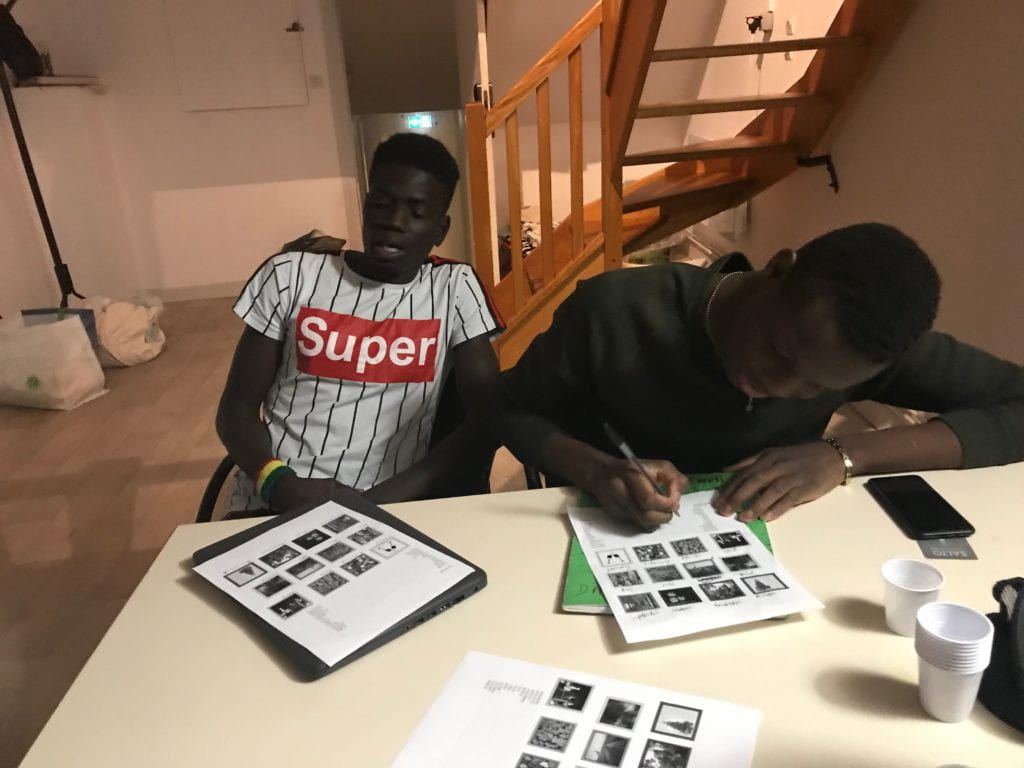I know we’ve had a long break, but I’m back at it. These last few weeks have been some of my favorite of the semester, in the program and out! We were lucky enough to visit one of the biggest nuclear power plants in France, Cattenom, and volunteered with some amazing people at Carrefour, the organization that works with youth immigrating to France.
At Cattenom, we were welcomed with a short video and presentation to help us understand the plant and the nature of nuclear energy in France. We had some precursors to the trip in our class, reading about and debating on nuclear power’s pros and cons, and they all came full circle when we actually got to the site. Nuclear centers like Cattenom were mostly constructed in the late 1980s or early 1990s in France, which really surprised me, and a majority of the electrical energy consumed in France is produced from its nuclear power centers (as opposed to other electrical energy sources like wind, solar, and coal). The energy is also relatively low cost compared to the other sources, in terms of money and the environment. Of course, if you ignore the potential health hazards and radioactive waste. There’s a lot of work done by the employees at Cattenom to ensure their safety and the community’s safety. They have regular screenings for radiation and strict protocol in operating at the site, whatever their particular job may be. When we arrived, we were given special shoes, hardhats and reflective vests, all as precautionary measures, and the safeguards don’t only extend to the people in and out of the site. For example, there’s a giant dome built over the reactor’s core to ward off natural disasters or a potential attack, as well as a heavily monitored exterior. Overall, the plant gave me a little more peace of mind as far as nuclear energy. I was conflicted, and still am a little, but overall, I believe that nuclear energy should be utilized over traditional methods, such as fossil fuels. There has been a lot of work to reduce the radioactive wastes produced from the plants, reusing as much as possible, as well as a lot of work put into how to ethically and effectively manage the wastes. However, I believe that we should use it in combination with other renewable forms of energy, not as a sole, main source of energy.


At Carrefour, some fellow SLS peeps volunteered with the young adults there, conducting a variety of classes, if you will. Two of my classmates, Lindsey Lovitt and Nachiketh Narreddy, went to give some beginners lessons in guitar, even helping one of the people there to tune their own guitar. I volunteer there by giving beginners lessons in drawing and, along with Morgan Gallimore, speaking English, funny enough. I’m thankful for my French speaking skills because this wasn’t a situation in which I could resort to speaking English in order to get my point across. I’m thankful for the experience as a whole, and I think the thing that made my time there so memorable was seeing the people smile after teaching them something, even the names of the months. I was fortunate to have met the people I did, young adults living in Carrefour’s lodgings and the employees themselves, and I look forward to talking to others and learning their stories as well. Talking with and listening to the struggles that people go through to secure a happy, healthy life is a heavy conversation, but I can see so much good. My compassion senses are tingling, and I think we could all do with a little bit of it.
